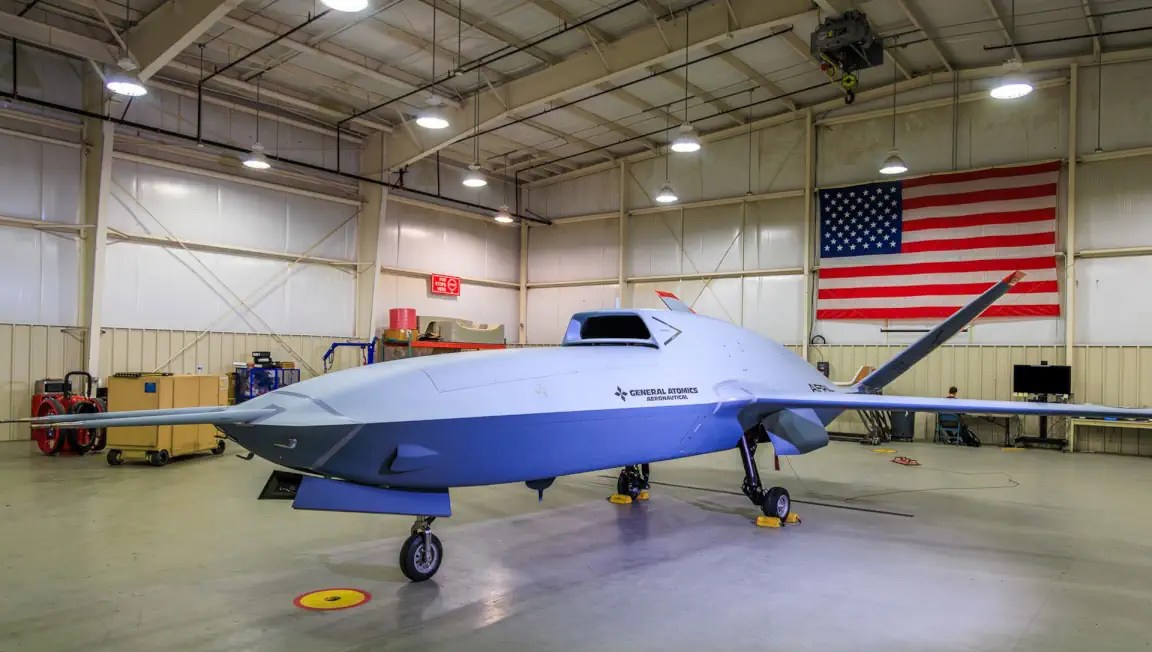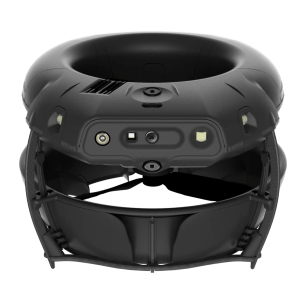XQ-67A: Leading the Way in Autonomy and Data Connectivity in the High Desert
The summer of 2025 witnessed a pivotal advancement for unmanned aerial vehicles (UAVs) and their potential integration with manned military systems. During an impressive display over California’s High Desert, the General Atomics XQ-67A, developed for the Air Force Research Laboratory (AFRL), showcased an unprecedented level of autonomous operation and advanced tactical datalink connectivity.
Understanding the XQ-67A: The Future of UAV Systems
At the heart of the XQ-67A is a state-of-the-art Autonomous Collaborative Platform (ACP), purpose-built to function as a smart, adaptable partner alongside both crewed and uncrewed aerial systems. Originating from the OBSS (Off-Board Sensing Station) initiative, the XQ-67A embodies a modular concept, allowing for rapid customization or reconfiguration to meet diverse mission needs.
Key Specifications:
- Max speed: 652 mph (1,050 kph)
- Service ceiling: 44,997 feet (13,715 m)
- Operational range: 2,128 miles (3,425 km)
- Length: 28.9 ft (8.8 m)
- Wingspan: 22 ft (6.7 m)
- Crew: Unmanned
- Payload: Sensors and intelligence-gathering equipment only
Designed for cost-effective mass production, rapid deployment, and flexibility, the XQ-67A stands as a cornerstone for future Collaborative Combat Aircraft (CCA) strategies.
Significance of the Test: Demonstrating Capability
In July 2025, General Atomics and the AFRL conducted rigorous flight trials for the XQ-67A, focusing on assessing:
- Government-controlled autonomy algorithms: Moving beyond vendor-specific control systems to enhance management within the defense sector.
- Secure tactical datalink capability: Interacting with crewed and uncrewed counterparts using secure military networks.
Mike Atwood, Vice President of Advanced Programs, GA-ASI, emphasized the Department’s dedication to integrating autonomous systems with current tactical networks, marking significant progress in operational autonomy.
The Bigger Picture: Integration and Collaboration
Manned-Unmanned Cooperation Potential
The strategic innovation in the XQ-67A lies in its ability to work cohesively with crewed aircraft, offering solutions such as networked operations and dynamic response to mission challenges.
Modular Design for Versatility
Built around a modular concept, the XQ-67A can accommodate multiple mission profiles—from electronic warfare to reconnaissance—ensuring flexible procurement and efficient logistical support.
Cost Efficiency and Tactical Flexibility
Emphasizing affordability and resilience, the XQ-67A is designed to be a scalable solution for potential future battlefield scenarios, where numbers and adaptability are crucial.
Test Analysis: High Desert Exploration
During the mission, the XQ-67A was successfully flown from a dedicated test range, utilizing government-controlled references for autonomy and receiving real-time datalink transmissions to adapt to changing tactical scenarios.
The test did not involve flying alongside crewed aircraft, but it affirmed the technological capability to do so, bolstered by secure communication frameworks shared with existing military aviation assets.
Industry Perspectives and Technological Progress
- Development Acceleration: The synergy of government-controlled autonomy and modular design quickens the pace of drone technology advancement.
- Future-Proof Innovation: By fostering open systems, General Atomics ensures ongoing relevance and interoperability.
- Operational Transition: The link and autonomy validations in active flight conditions demonstrate rapid progression from laboratory research to applied operations.
Transforming Air Combat with the XQ-67A
In potential contested environments, the XQ-67A promises to redefine air strategy, leading formations composed of both manned and unmanned systems, all connected through a secure, adaptable data network. This strategy allows manned pilots to focus on critical decisions while the drones perform supportive roles efficiently and reliably.
Test Conclusion: Highlights and Future Prospects
The XQ-67A’s trial underscores the vast possibilities of integrating modular, autonomous units into existing military frameworks, enhancing survivability, situational awareness, and overall mission success.
FAQ
Will the XQ-67A carry weapons? It currently carries only sensors and data equipment, though modular alterations could potentially support different payloads.
Is the XQ-67A part of a larger initiative? It represents the starting point for a line of rapidly adaptable UAVs ensuring agility in meeting future military demands.
Will it replace manned fighters? Not immediately—it is designed to complement manned operations, not replace human capabilities.
Cultural Implications: Beyond Fiction
The XQ-67A’s capabilities echo themes from popular media, bringing to life Hollywood’s visions of smart, collaborative air combat.
Final Thoughts: Monitoring the XQ-67A’s Evolution
The significant milestones achieved during this test are likely to influence military aviation profoundly—transitioning from isolated drones to network-enabled teammates, ensuring a safer and more effective aerial combat environment moving forward.













